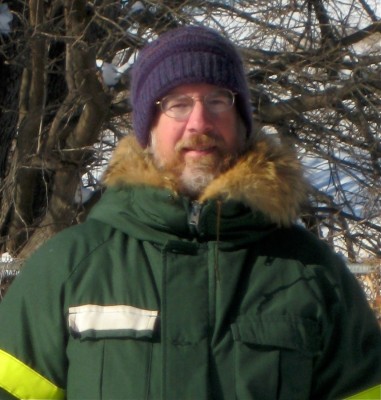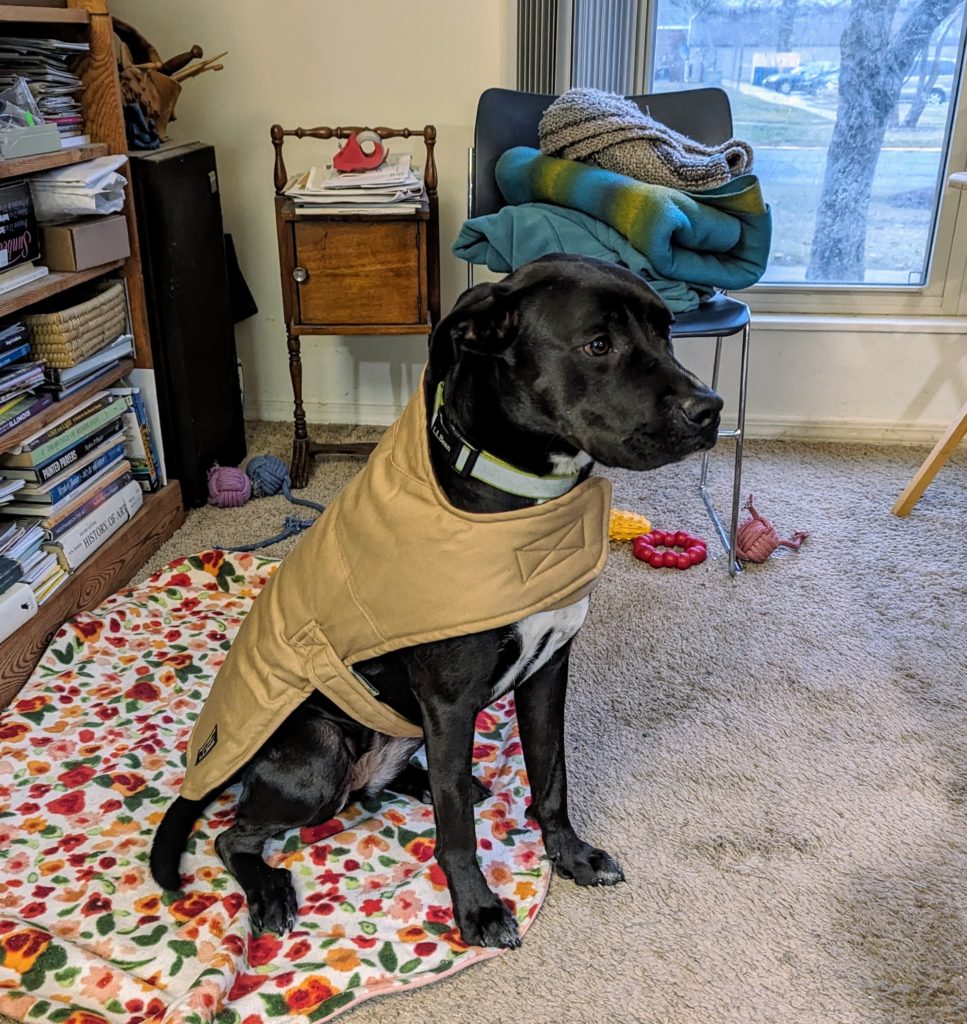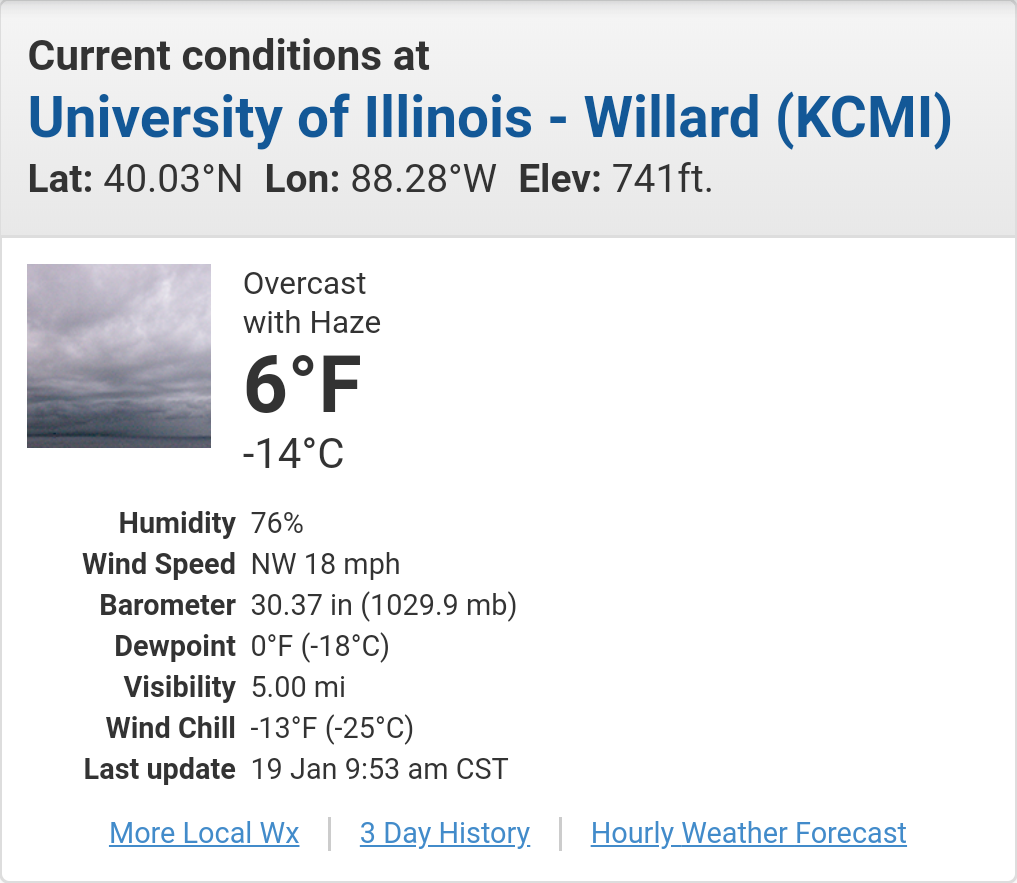I was interested to read John Scalzi’s thoughts about his wardrobe in Why I Wear What I Do, because his thinking (although not his sartorial choice) mirrors my own. Like him, I’m very aware that any disadvantage that accrues to me from my choosing to dress down is going to be minor and temporary. Like him, I’m aware that this is a privilege that doesn’t apply to everybody.
Sometimes I get hit in the face with a reminder that this issue is real, even if it mostly doesn’t apply to me. A couple instances come to mind. One was being taken for a possible bicycle thief.
Bicycle thief
A couple of summers back, my brother was visiting, and he and I were out walking in the neighborhood of my apartment complex. Our route took us past a Wienerschnitzel fast-food restaurant. Outside the entrance, a bicycle had been left, unlocked, lying on the pavement.
The bicycle caught my eye because of the owner’s alternative to locking it up: He had removed the left pedal and taken it with him. I paused for a moment to think about that. It wouldn’t, I remember thinking, be effective against someone who showed up with a truck to haul off stolen bicycles, but it probably would be effective against the casual thief who simply wanted to ride a few blocks instead of walking. It’d not only be hard to ride, it would be hard even to mount—most people stand on the left pedal as they swing their right leg over the seat. It was a clever minimalist solution, that I wanted to stash in my brain for possible future use, if I needed to leave my bike unattended briefly and was unable to use my lock for some reason.
I’d only had a moment to think about it, when the owner came out of the restaurant, saw me looking at his bike, and began cursing me as a someone who was contemplating theft.
I saw no point in engaging with the guy, so I just walked on, expressing my amusement to my brother, who pointed out that my appearance might well have made me look like a possible thief. I was dressed down—I don’t remember what I was wearing, but it was almost certainly shorts and a t-shirt, possibly ragged. More to the point, I was on foot. (Anyone who isn’t in a car probably has something wrong with them—if they’re not alcoholics who have lost their driver’s license, they’re either poor or they’re some kind of weirdo. And I had to give him that one. I am some kind of weirdo, although not the bike-stealing kind.)
The other instance springs from my habit of letting my beard grow in the winter, which I do because it keeps my face warm.
Taken for a homeless guy
Maybe three years ago, on the coldest evening of a cold winter, I was on my way home from my Esperanto group. Having gotten to the bus stop just after my usual bus home had departed, I decided to take the next bus to the station, so I could wait indoors for the next bus home.
While I was waiting for my bus, a group of volunteers from local non-profit service organizations came in offering hats, gloves, other winter gear, referrals to homeless shelters, and hot beverages. One of them, clearly taking me to be a homeless person, focused on me.
For some reason, I was unable to come up with a response. I mean, I clearly should have just told her that my cold weather ensemble was entirely up to the task, and that in any case I was wasn’t homeless and would be heading home on the next bus. But I couldn’t quite get it out. First, it took me several seconds to realize that she was talking to me in particular, and then several more seconds to understand that she really thought I was an obvious example of her target audience.
Only then did it occur to me what I looked like. It was a really cold day, so I was wearing my warmest coat:

More to the point, it was winter and I’d grown out my beard. The picture above shows me with my neatly trimmed spring beard. At the time of the incident I had grown my beard out to its full winter length, so it probably looked more like this:

So, you know, I can accept being mistaken for a homeless person.
Issue of privilege
In my case, neither of the incidents did me any harm, but either one could have. In the bicycle incident, if circumstances had been only a bit different, the police might have gotten involved. Probably not a problem for me—even dressed down, I’m a middle-aged white guy with an education and some capital—but any interaction with the police has the potential to go badly wrong.
The other incident could have been even more problematic. What if I’d missed the last bus, and decided that rather than call for help or take a taxi, I’d just walk home? That’s something I really might do, even at night, even in the cold. But a scruffy-looking guy out on foot in the bitter cold might well draw more insistent offers of help than those that had rendered me speechless. Maybe a ride to a homeless shelter. Or a psych ward.
By the way, another bit of the internal conflict that kept me from articulately assuring the social worker that I was fine and that she should go look for people who actually needed help was that I was wearing what is probably the warmest coat in the world. My heavy winter parka was designed for workers on the Alaska Pipeline. Purchased cheap when work on the pipeline wound down, it has lasted more than 30 years already, and I expect it will last the rest of my life. I was trying to come up with a polite way to say that what they had in the way of cold weather gear couldn’t possibly measure up to what I already had.
Scaliz’s post was a response to The Logic of Stupid Poor People, an excellent essay on just how subtle the trade-offs are for a poor person deciding what it’s worth spending money on. Having a keen eye for when the right status symbol will open a door that would otherwise be shut (or ensure that an interaction with the police is courteous rather than confrontational) is a third option that I failed to consider when I wrote Not Stupid—Hopeless.
By the way, I used to wear polo shirts a lot, for just the reasons that Scalzi mentions: The collar makes the shirt just dressy enough to raise you above the t-shirt wearing classes, without making it look like you’re trying too hard. At some point, I found that middle-ground was no longer working for me. If circumstances call for something nicer than a t-shirt, I’m more comfortable in a shirt that buttons all the way down the front. My 30-something self would have found that weird. Why, the past few years, I’ve even been known to wear a tie voluntarily! (For a lot of reasons, some very much related to these issues—to manipulate what people think of me when they see how I’m dressed, and to mock the fact that people think that way.)






